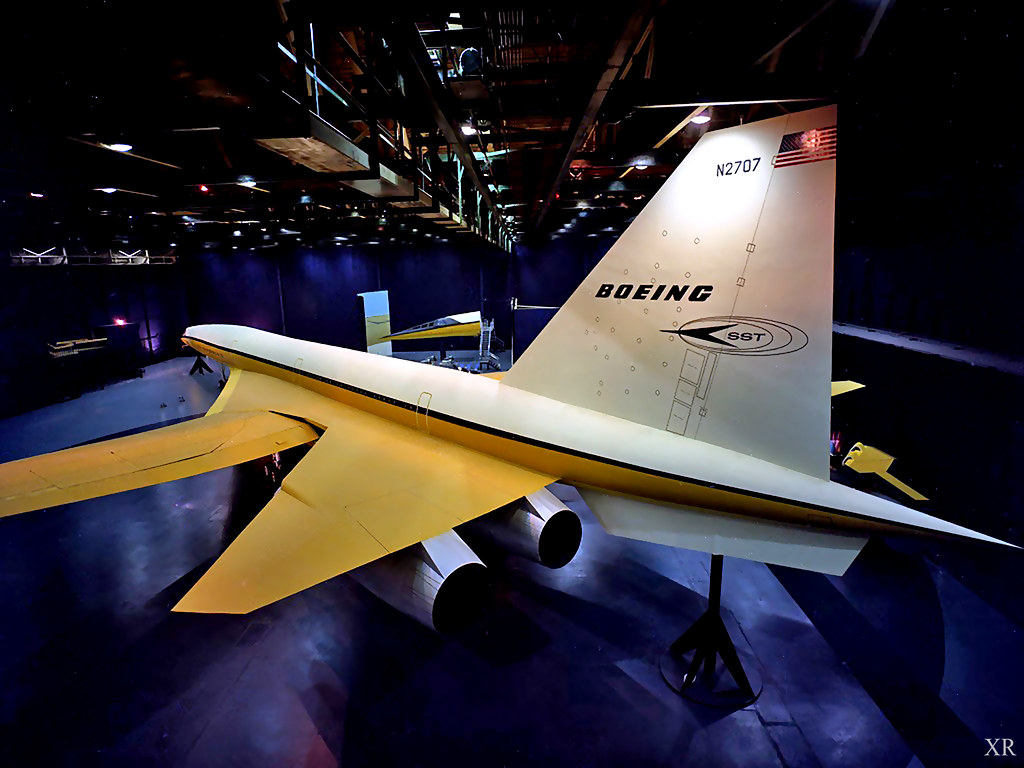#boeing sst
Text

An artist’s conceptual illustration of the Boeing 2707-300 super sonic transport.
#sst#vintage illustration#boeing#boeing sst#super sonic transport#the 60s#air travel#vintage air travel#jet airliners
28 notes
·
View notes
Text

Artist's impression of Boeing SST double decker concept.
"The SST lives on
This Boeing artist's concept shows what a future supersonic transport might look like as it carries passengers to their destinations at more than twice the speed of sound. An American SST is a long way off, of course, but the space agency and the aerospace Industry are continuing low-level technology studies in the event future developments warrant a faster-than-sound commercial airliner. This is one of many concepts studied by the Boeing Commercial Airplane Co. under funding from the government and Its own resources. This particular plane would seat 480 persons in all-tourist class for three-hour transocean flights."
Date: May 28, 1981
source
14 notes
·
View notes
Text

General Electric GE4 turbojet, most powerful engine of its era. almost 30’ long, thrust output 63,000 lbs with after afterburner. To put that into perspective, three times more than the F-4 Phantom's J79s. Designed for use on Boeing 2707 SST, but both cancelled in early 1970s.
@CcibChris via X
8 notes
·
View notes
Note
The Gotchard cast are on vacation to relax from being Riders but it appears Kaguya found them and is approaching them in his golden helicopter, the "Legend-copter", to ask for Houtaro's hand in marriage, again. Thankfully or not in Kaguya's case, two Mini-con teams have decided to stop him from doing any of this by attacking him.
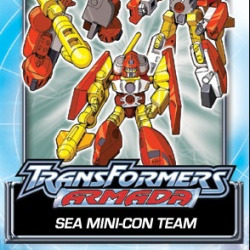
The Sea Mini-con Team comprised of Oceanglide the "solar sail" boat, Stormcloud the speedboat, and Waterlog the hovercraft.

The Air Defense Mini-con Team comprised of Jetstorm the Concorde SST, Runway the Boeing Sonic Cruiser, and Sonar the VentureStar shuttle.
The Sea Mini-con Team starts to fire upon Kaguya's "Legend-copter" to either force Kaguya to land the helicopter or cause the helicopter to crash. The Air Defense Mini-con Team decide to board the helicopter and fight Kaguya by ripping one of the doors off and attempt to fight but they accidently send the helicopter to crash and Kaguya is able escape by parachuting away but the parachute is "accidently" ripped by Jetstorm while fleeing from the crashing helicopter. Which, leads to Kaguya landing in the water to drown, but he is thankfully saved by a Mini-con from a different team commanded by Houtaro to save Kaguya.

The Emergency Mini-con Team comprised of Firebot the crash-response truck, Makeshift the twin-rotor helicopter, and Prowl the Cybertronic police car.
Makeshift saves Kaguya from drowning and gets him on to land. Houtaro comforts Kaguya, who is slowly growing afraid of these machines, with the Emergency Mini-con Team, while the other members of the Gotchard cast scold the two other Mini-con teams for almost killing Kaguya.
What are the Riders' reactions to these sequence of events?

Emu: ...You couldn't have left him to die? *everyone gasps and looks at Emu* What? Are we going to act like those two aren't that guy's role models? *gestures to the Magenta Menace and the Yandere Cyan*
Shinnosuke: Uh... I think it's for the better if we never tell Houtaro about what you just said... and everything that just happened...
And so Houtaro remains oblivious, bless him, and Hojo Emu scares the fuck out of the mini-cons
#kamen rider legend vs kamen rider gotchard#houou kaguya quartz#ichinose houtaro#ask#lowder-the-koopa
2 notes
·
View notes
Photo
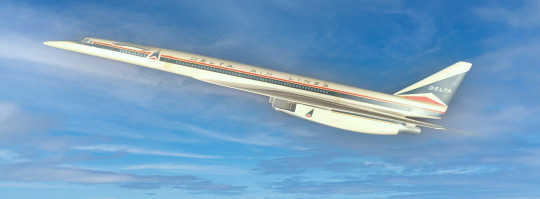
North American SST proposal. Based on the XB-70, it lost to the Boeing 2707, which itself would never be built.
47 notes
·
View notes
Text

fan cover for 299: self-traitor, i do bring the spider love by bull of heaven, because the highest res i can find of the official cover is less than 500px
sources:
i used ai in colorizing and re-upscaling the image. the extension of the edges is just me photoshopping in Krita
0 notes
Text
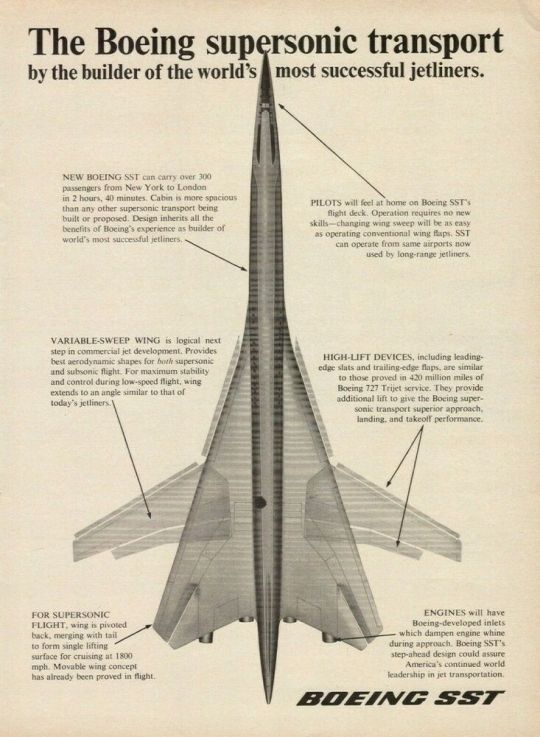

The Boeing 2707 was an American supersonic passenger airliner project during the 1960s. After winning a competition for a government-funded contract to build an American supersonic airliner, Boeing began development at its facilities in Seattle, Washington. The design emerged as a large aircraft with seating for 250 to 300 passengers and cruise speeds of approximately Mach 3. It was intended to be much larger and faster than competing supersonic transport (SST) designs such as Concorde.
The SST was the topic of considerable concern within and outside the aviation industry. From the start, the airline industry noted that the economics of the design were questionable, concerns that were only partially addressed during development. Outside the field, the entire SST concept was the subject of considerable negative press, centered on the issue of sonic booms and effects on the ozone layer.
A key design feature of the 2707 was its use of a swing wing configuration. During development, the required weight and size of this mechanism continued to grow, forcing the team to switch to a conventional delta wing. Rising costs and the lack of a clear market led to its cancellation in 1971 before two prototypes had been completed.
0 notes
Link
The concept of supersonic transport (SST) has been a part of the commercial flight and aerospace sector since the 1970s. But as the Concorde demonstrated, the technology’s commercial viability has always been hampered by various challenges. For starters, supersonic planes must limit their speed to about 965 km/h (600 mph) over land to prevent damage caused by their sonic booms. Given the potential for flying from New York City to London in about 3.5 hours, which otherwise takes about 8 hours on average, aerospace engineers hope to overcome this problem. Since 2006, the NASA Commercial Supersonic Technology Project (CSTP) has been researching SST as part of its QueSST mission and the X-59 quiet supersonic aircraft to reduce sonic booms, thus removing a crucial barrier to commercial development. Recently, NASA investigated whether commercial supersonic jets could theoretically travel from one major city to another at speeds between Mach 2 and 4 – 2,470 to 4,940 km/h (1,535 to 3,045 mph) at sea level. These studies concluded that there are potential passenger markets along 50 established routes, which could revolutionize air travel. The QueSST mission aims to provide aviation regulators like the Federal Aviation Administration (FAA) with data that will help change the rules regarding overland supersonic flight. The U.S. and other nations currently prohibit supersonic flights over land, which is why the studies’ findings covered trans-oceanic travel. This included high-volume North Atlantic routes connecting North America to Europe, Africa, and Eurasia and trans-Pacific flights connecting to Asia. Lori Ozoroski, the project manager for NASA’s CSTP, explained in a recent NASA press release: “We conducted similar concept studies over a decade ago at Mach 1.6-1.8, and those resulting roadmaps helped guide NASA research efforts since, including those leading to the X-59,” “These new studies will both refresh those looks at technology roadmaps and identify additional research needs for a broader high-speed range.” Artist’s impression of the X-59 supersonic research aircraft. Credit: NASA With these studies complete, NASA’s Advanced Air Vehicles Program (AAVP) is now moving ahead with the next phase of the research. This program conducts studies to evaluate and create technologies that could lead to new aircraft systems and advanced concepts that promise to revolutionize air travel. The next phase will involve issuing two 12-month contracts to companies to produce designs and technology roadmaps for their realization. Each team will be led by a major aerospace developer and will include commercial and research partners offering technical expertise. They include: Team Boeing: Boeing Commercial Airplanes (lead), Exosonic GE Aerospace, Georgia Tech Aerospace Systems Design Laboratory, Rolls-Royce North American Technologies, and others. Team Northrop Grumman: Northrop Grumman Aeronautics Systems (lead), Blue Ridge Research and Consulting, Boom Supersonic, and Rolls-Royce North American Technologies. Each team will be responsible for exploring air travel possibilities, outlining risks and challenges, and identifying the technologies necessary to make their concepts a reality. They will also be required to include detailed descriptions of the concept elements, including the airframe, power, propulsion, thermal management, and composite materials – all of which must be able to endure high-supersonic speeds. Said Mary Jo Long-Davis, the manager of NASA’s Hypersonic Technology Project (HTP): “The design concepts and technology roadmaps are really important to have in our hands when the companies are finished. We are also collectively conscious of the need to account for safety, efficiency, economic, and societal considerations. It’s important to innovate responsibly so we return benefits to travelers and do no harm to the environment.” In April last year, NASA reported that they had finished crucial ground tests on the X-59 airframe. These happened over several months at the NASA/FAA North Texas Research Station (NTX) in Fort Worth, Texas. The airframe was then returned to Lockheed Martin’s Skunk Works facility in Palmdale, California, where it received its supersonic jet engine by the following November. As of June 2023, the aircraft has been moved into a new phase of ground testing on the flight line (the space between the hangar and the runway) to ensure it is ready to fly. These efforts parallel those of commercial space companies like Virgin Galactic, SpaceX, Blue Origin, and others hoping to realize suborbital and transcontinental flights with their spaceplanes and spacecraft in the near future. Whether it’s taking place in the air lanes above major cities or in space, the future of transportation promises to be very advanced and very rapid! Further Number: NASA The post NASA is Helping to Develop a Mach 4 Passenger Jet appeared first on Universe Today.
0 notes
Text




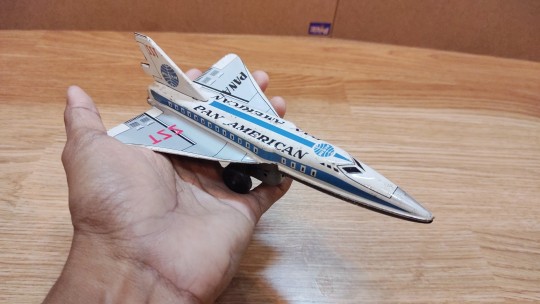
Boeing 2707 SST Pan American Airways. Vintage retro airplane litho tin toy Japan 70s. Friction powered. Unbranded. From Japan. Buy now! on eBay site. Click here >>> [Sold out]
#japan#tin#tintoy#vintage#vintage toys#tin toys#toys#litho#toy#retro#tintoys#tin toy#friction#powered#airlines#airplane#airways#pan am#pan american#sst#boeing#boeing 2707#in japan#japanese
0 notes
Video
youtube
The American quest for a supersonic jet | The Boeing 733, 2707 (SST) and...
#youtube#supersonic#super sonic#boeing#aviation#aircraft#aircrafts#airplane#history#engineering#aviation history#vintage#documentary
0 notes
Text
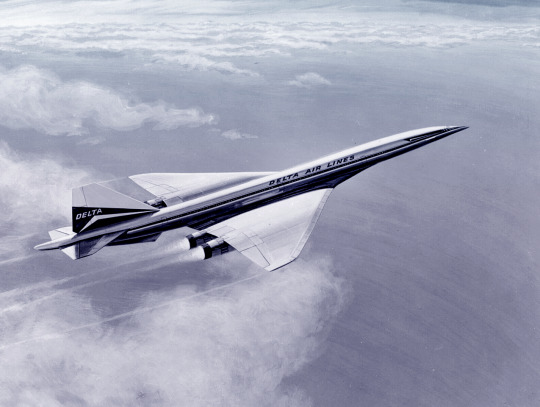
Artist’s concept of the proposed Boeing 2707-300 super sonic transport.
#delta#delta air lines#sst#boeing#boeing sst#super sonic transport#jet airliners#air travel#vintage air travel#the 60s
9 notes
·
View notes
Text

A former TWA Boeing 2707 SST in the boneyard.
Note: happy April fool's day
Date: April 1, 1998
source
#Boeing 2707-300#Boeing 2707#2707-300#2707#Supersonic Transport#SST#Supersonic Transport Project#National Supersonic Transport Program#NST#Supersonic Passenger Airliner#Cancelled#boneyard#TWA#1998#april fool's day#april fool's#April#my post
42 notes
·
View notes
Video
1967 ... SST - designs mid 1960's by James Vaughan
6 notes
·
View notes
Text
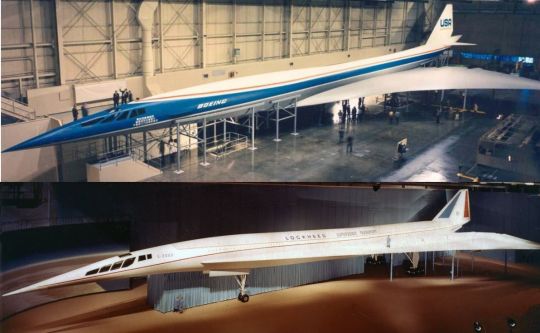
-Mockups of the two final American SST concepts, the Boeing 2707 and the Lockheed L-2000. | Composite Photo: Justin Gibb
FLIGHTLINE: 136 - AMERICAN SST PROGRAM
Various programs to develop a supersonic transport in the US stretched from the middle 1950s until the early 1970s, but no aircraft ever resulted.
The first recorded supersonic flight (the speed of sound is 767mph at 20°C/68°F at sea level) was on 14 October 1947, when the American X-1, piloted by Chuck Yeager, reached Mach 1.06. By the 1950s, supersonic flight became a more regular occurrence, though it was still almost exclusively restricted to military pilots. Around this time, various projects around the world began to develop airliners that could break the sound barrier too. Designs like the Sud Aviation Super-Caravelle and Bristol Type 223 were sketched, but technical limitations as well as a lack of funding stalled those efforts.
♫NINETY MINUTES FROM NEW YORK TO PARIS♫
Research continued however, and by the early-1960s a new round of programs were started, with BAC (later BAe and BAE Systems) and Sud Aviation (later Aérospatiale and Airbus) joining forces to produce what became Concorde, while the Soviet design bureau Tupolev developed the Tu-144 (NATO reporting name "Charger"). Numerous American carriers placed orders for Concorde aircraft, but spiraling costs and a desire to develop a domestic SST saw those orders canceled in the early 1970s. In the end, only Air France and BOAC/British Airways operated Concorde, while the Tu-144 was exclusively flown by the Soviet state airline Aeroflot.
BUY AMERICAN!
The FAA estimated in the early 1960s that there would be a market for 500+ SSTs by the year 1990. Fearing Anglo-French domination of the airline industry, the US Congress began funding various research programs, and President John F Kennedy announced a National Supersonic Transport program on 5 June 1963. Requests for proposals were sent to Boeing, Lockheed, and North American for the airframes; and Curtiss-Wright, General Electric and Pratt & Whitney for engines. The request stipulated a cruise speed of Mach 3, and a passenger capacity of up to 300. Preliminary designs were submitted on 15 January 1964
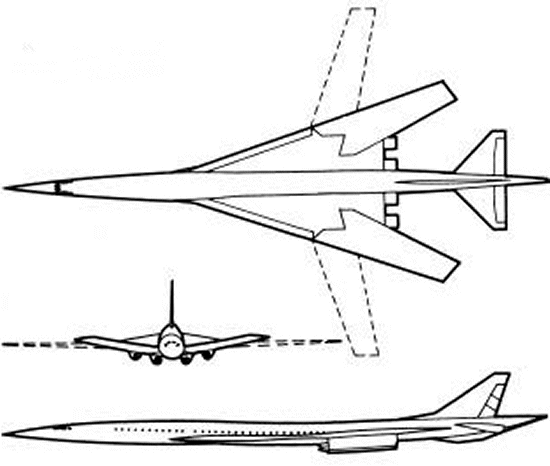
-Line drawing of the Boeing 733-790 SST, which initially featured swing wings. | Illustration: Boeing
The Boeing 733 model featured a large blended wing root with variable geometry outer panels, resembling an enlarged Rockwell B-1. The proposal included optional fuselage extensions, potentially increasing capacity to 227 passengers.

-Line drawing of the the CL-823. | Illustration: Lockheed Corp.
Lockheed's CL-823 was functionally an enlarged Concorde, though the wing shape was a cranked arrow rather than Concorde's ogival delta.
The North American NAC-60 was the smallest and slowest of the competitors, potentially transporting 187 passengers at Mach 2.65.
In 1965 the FAA downselected the NAC-60 design, as well as Curtiss-Wright's engine work, freeing up funds for Boeing and Lockheed on the airframe side and P&W and GE for the engine development.
TIME TO SHARPEN YOUR PENCIL.
The FAA scheduled a final selection in 1966, and requested detailed proposals from Boeing and Lockheed. Boeing had gone through several iterations of the Model 733, with the 733-390 being presented in September 1966. The aircraft was one of the first wide-body airliners, with 2-3-2 seating. In the 30-seat first class section, small tv's were to be integrated into a console between the seats, while in the 247-seat tourist class section larger retractable tv's would drop from the overheads every six rows. Externally, the engine pods had been moved back under the tail, and the wings, when swept back, would form a delta with the tail.
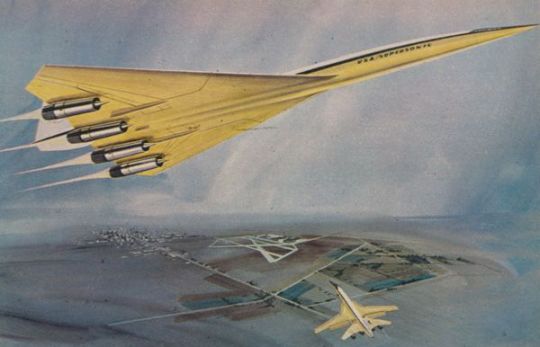
-Illustration of the 733-390, with one at maximum sweep and one at minimum. | Illustration: Boeing.
Lockheed's CL-823 had evolved as well, with the L-2000-1 design having changed from a cranked arrow to a delta wing, with the engines separated into individual pods. In order to speed production, the L-2000 was projected to use a derivative of the J58 engine that had powered the A-12 OXCART and SR-71 Blackbird. New requirements from the government saw changes to the wing and fuselage, and the engine pods were redesigned to accommodate either the P&W JTF-17A or GE4 designed as part of the SST program. The final design presented to the FAA was the L-2000-7A/B (the B was 20 feet longer), which had a passenger capacity of 230.

-Advertising image of the L-2000-7A. | Illustration: Monsigneurhulot
THE FINAL SHOWDOWN
The final designs, complete with full-scale mockups, were presented in September 1966.

-The full-scale mockup of the 733-390, in a striking white-over-yellow paint scheme. The size of the plane is evident from the man standing near the third jack. | Photo: Boeing

-Appearing no less impressive, the Lockheed L-2000 mockup. | Photo: Lockheed
FAA review of the competing SSTs took until December, with the Boeing design being announced the winner on 1 January 1967. The L-2000 was judged to easier to produce, but it was also thought to be less risky and advanced than the Boeing entry, and thus the latter was more in the spirit of the design mandate. Also, the Lockheed craft was anticipated to be louder with the JTF-17A engines, as well as being slower.
Boeing anticipated construction of the 733-390 prototypes, now referred to as the 2707-200, would begin in 1967, with first flight in 1970. Construction of the production models was expected to commence 1969, with first flight in 1972 and FAA certification anticipated by 1974.

-The public enthusiasm for the SST program was initially high, with scale models and toys of the design being release by multiple companies. Seattle's NBA team, formed in 1967, was initially named the SuperSonics. | Photo: oldmodelkits.com
NO PLAN SURVIVES FIRST CONTACT WITH THE ENEMY (IN THIS CASE, PHYSICS)
Almost immediately, Boeing began encountering problems with the design. Canards were added to improve flight characteristics, but this added weight. The swing wing mechanism were also much heavier than anticipated, with one pivot section being an eleven feet long, two-and-a-half feet thick piece of titanium weighing 4,600lbs. All of this added weight was eating into the plane's range and lowering the speed, and in October 1968 the company made the decision to delete the variable geometry wings and utilize a fixed delta instead. Fabrication of a mockup of the new design, the 2707-300, as well as two prototypes, commenced in September 1969. Despite these issues and delays, by October 1969 Boeing had orders for 122 2707s from 26 airlines, including Alitalia, Canadian Pacific Airlines, Delta Air Lines, Iberia, KLM, Northwest Airlines, and World Airways.
It was during this period however than organized opposition to SSTs became more pronounced. During the first half of 1964, the FAA conducted Operation Bongo II, under which Oklahoma City, Oklahoma was subjected a total of 1,253 sonic booms. Up to eight booms were scheduled, beginning at 7am and ending in the afternoon. Various aircraft were used, from fighters like the F-104 to bombers like the B-58 and XB-70. The results of the experiment were encouraging, with only 9,594 complaints of damage to buildings, 4,629 formal damage claims, and 229 claims for a total of $12,845.32 ($108.983.34 in 2021). 73% of subjects in the study said that they could live indefinitely with eight sonic booms per day, while 25% said that they couldn't. Approximately 3% of the population filed complaints or lawsuits. The FAA's handling of the program and response to the claims completely undid the public's acceptance of supersonic flight however. The program was undertaken with minimal engagement of the local authorities, and afterwards the FAA dismissed 94% of the claims received, attracting the ire of state and national leaders. Class action lawsuits were filed against the government, and public opinion turned against the SST. This culminated in a national ban on supersonic flight over land. Another source of concerns was the exhaust from the jet engines, specifically nitrogen oxides, which were found to damage stratospheric ozone. A fleet of 500 SSTs was calculated to cause a drop in ozone of 1 to 2%, though changes in fuel and engine technology would help mange this.
THE COLLAPSING STAGE...
The mounting environmental concerns, souring public perception, continuing technical hurdles and competing projects saw the funding for the SST program drying up. Both the House and Senate voted in 1971 to end funding for the program, spelling the end of American SST. Whatever work completed on the prototypes was dismantled, and the one completed 2707-300 mockup was sold to the SST Aviation Exhibit Center in Florida, which displayed it from 1973 until 1981. Hard times saw the closure of the museum, which was then sold to the Faith World Church in 1983. For the next seven years, the Osceola New Life Assembly of God held services beneath the wing of the only remaining example of the US' supersonic airliner program.
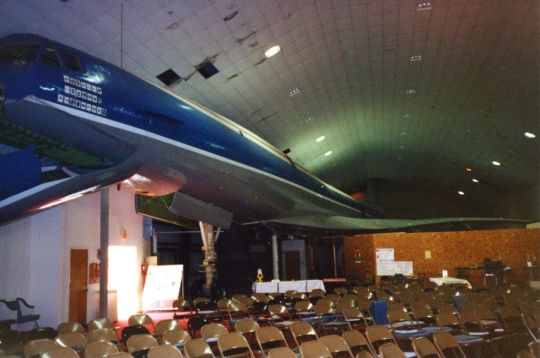
-The 2707 mockup some time in the 1980s. Sunday school classes were held under the port wing for nearly a decade. | Photo: Boeing
In 1990 the remnants of the mockup were sold to Stan Hiller, helicopter pioneer and owner of the Hiller Aviation museum. In 2013 the forward 90' section of the fuselage, now all that remained, were shipped to the Museum of Flight was part of a transfer between the two museums. What's left of the 2707-300 is now under restoration; the last remnants of a grand dream to move air travel forward at Mach 3.

-The remaining segment of the 2707, now 50 years after the program's termination. | Photo: Boeing
#aircraft#aviation#avgeek#airplanes#airplane#cold war#cold war history#coldwar#usaf#aviation history#sst#seattle supersonics#supersonic jet#supersonic transport#supersonic airliner#Boeing#Lockheed#the 60s#the 70s#the sixties#the seventies#faa#air travel#Concorde#boac#air france#Tupolev#tu-144#tu 144#concordeski
95 notes
·
View notes
Photo
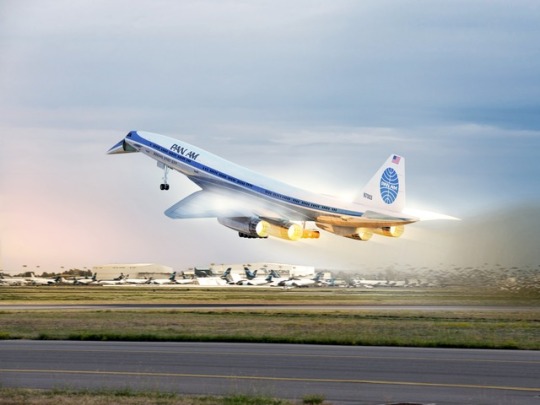
Today in Airline History: May 19, 1971. Boeing cancels its 2707 supersonic airliner project, due to soaring costs and lack of sales. The 250- to 300-seat plane would have been much larger and faster than Concorde. https://www.instagram.com/mundera/
1 note
·
View note
Photo


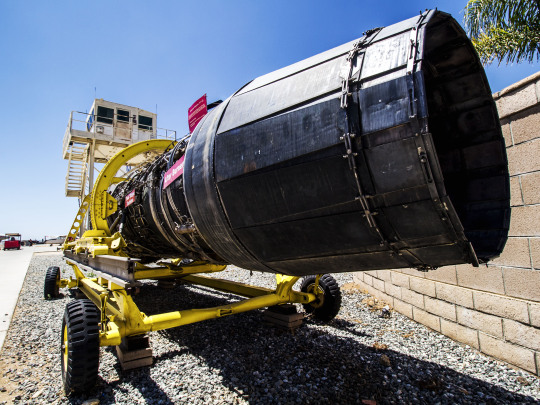



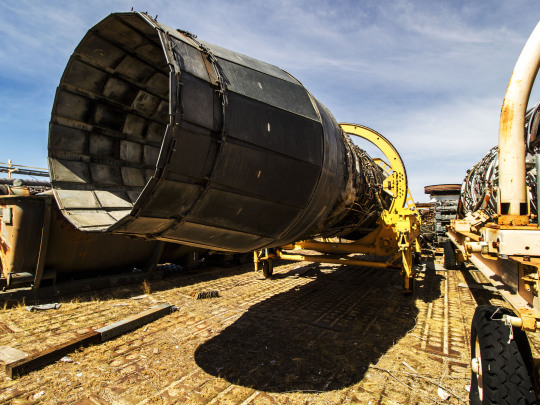


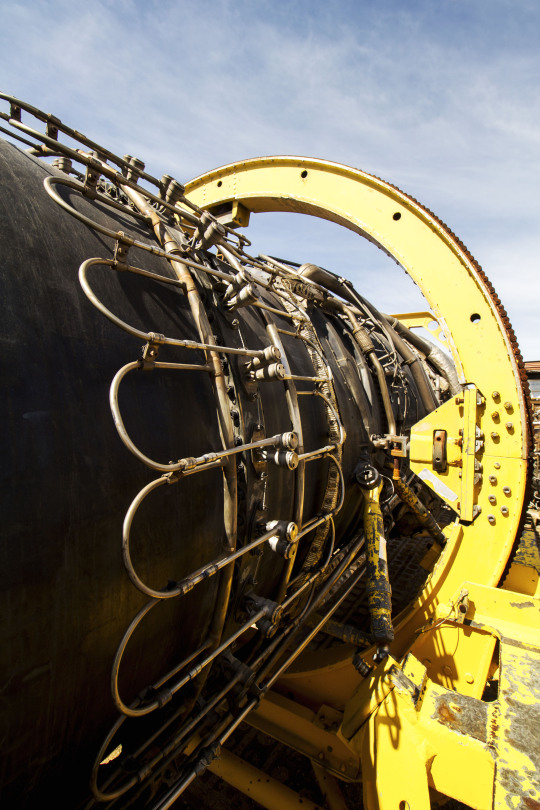
The North American XB-70 Valkyrie was an enormous bomber that flew at speeds up to Mach 3. It was an incredible airplane propelled by an equally incredible engine: the General Electric YJ93. Even with impressive efficiency and a thrust to weight ratio of better than 7:1, it took six of these to push the Valkyrie to its top speed. During one test flight, a piece of the aircraft’s intake was dislodged and ingested. This destroyed all six engines in one multi-million dollar instant.
Unfortunately, the XB-70 and two subsequent aircraft associated with the engine never saw production. The XB-70 was cancelled after a prototype flight test program. Another aircraft that would have used this engine, the North American XF-108 Rapier, never got off the ground. While Boeing was working toward creating the 2707 Supersonic Transport, the YJ93 was developed into the GE4 engine, but once again, the aircraft never came to fruition. All three aircraft associated with this engine were doomed.
A handful of these prototype YJ93s remain scattered about the United States.The first six photos show the artifact at March Field Air Museum on March Air Reserve Base, California, and the final four photos show another engine stored by the Air Force Flight Test Museum on Edwards Air Force Base, California. These engines represent their various programs that could have been so much more.
#Science#Engineering#History#Aerospace#Edwards Air Force Base#March Field Air Museum#Air Force#Flight Test Museum#Air Force Flight Test Museum#Jet Engine#Engine#Jet#XB-70#XB-70 Valkyrie#YJ93#General Electric#GE#Boeing SST#SST#Supersonic Transport#XF-108#XF-108 Rapier#Photography#Aviation#Aviation Photography#Aerospace Photography
114 notes
·
View notes
